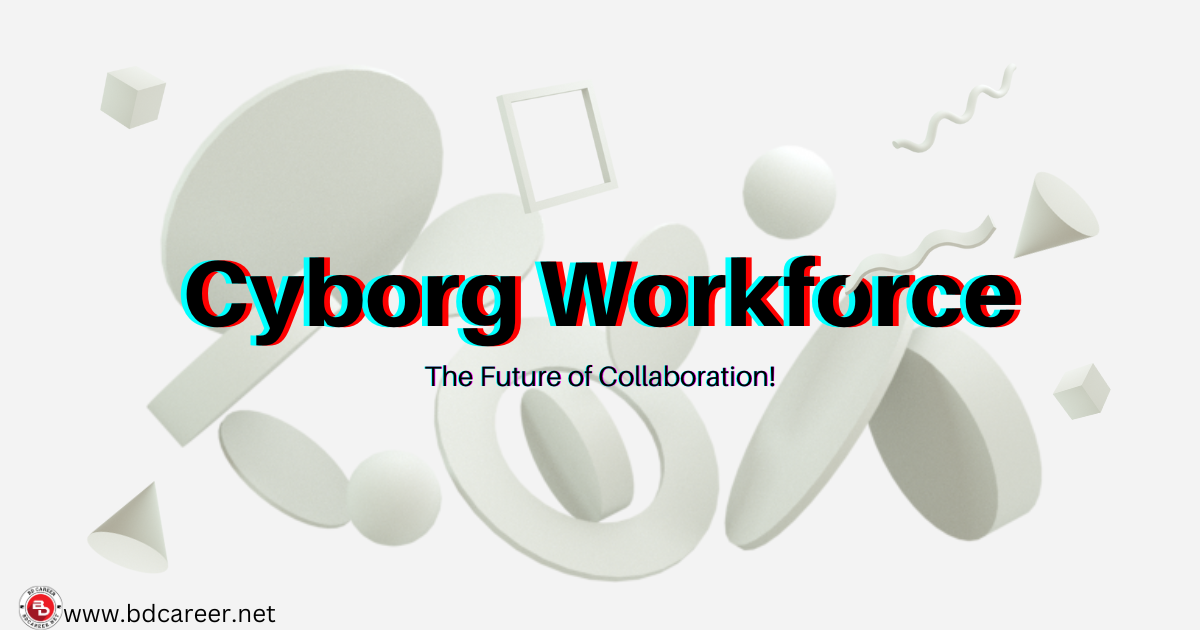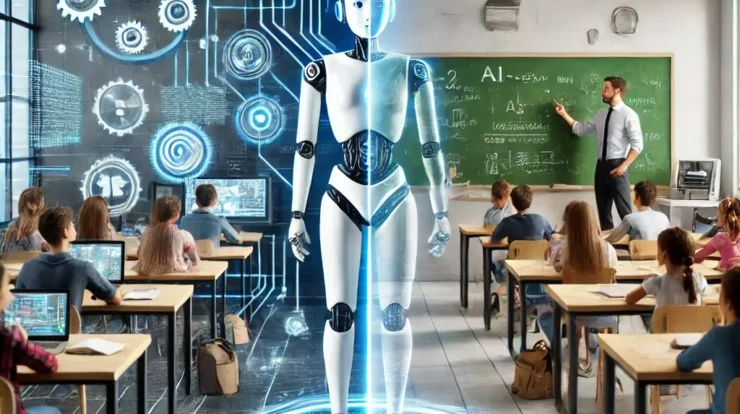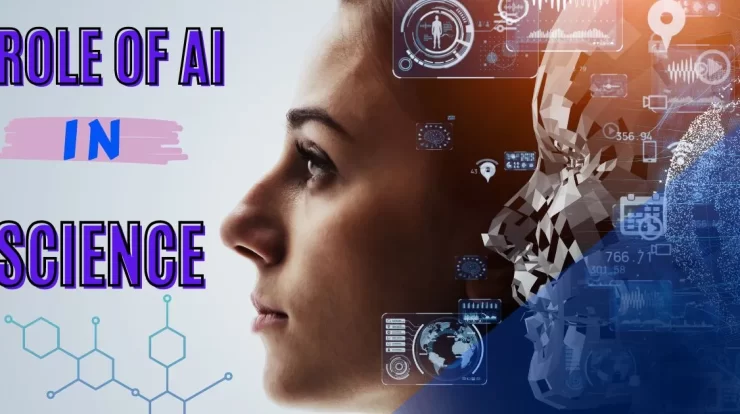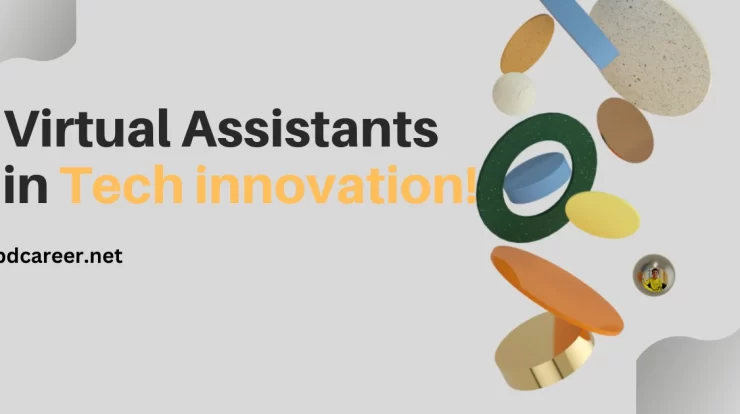
Hey there! In our fast-paced tech world, the idea of a cyborg workforce is not just a far-off dream anymore—it’s happening, and we’re all getting on board. This article concerns cool stuff like wearable tech and AI teaming up in the workplace. We’ll chat about the ethics, check out some new career options, and dive into success stories that show how humans and machines are teaming up like never before.
Contents
Wearable Technology in the Workplace
Wearable technology has transcended beyond fitness trackers and smartwatches, finding a profound place in the professional realm. From augmented reality (AR) glasses improving warehouse logistics to smart helmets enhancing safety in construction, wearables are revolutionizing how we work. These innovations not only boost productivity but also redefine the traditional boundaries of the workplace.
Productivity through Wearables
One of the key advantages of wearable technology is its direct impact on productivity. Employees with wearables can access real-time information, streamline communication, and perform tasks more efficiently. This has significantly improved various industries, from healthcare to manufacturing.
Diverse Applications of Wearables
The implementation of wearable technology is not limited to a specific sector. For instance, smartwatches equipped with health-monitoring features enhance patient care in healthcare. AR glasses provide workers instant access to manuals and schematics in manufacturing, reducing errors and improving overall efficiency.
Integration of AI
As wearables redefine the physical aspects of work, artificial intelligence is reshaping its cognitive dimensions. AI algorithms are increasingly integrated into daily operations, offering businesses data-driven insights and automation capabilities. However, with great power comes great responsibility.
AI’s Crucial Role in Workplaces
AI is no longer a futuristic concept; it’s a driving force in today’s workplace. From automating routine tasks to analyzing vast datasets, AI enhances decision-making processes. Its ability to adapt and learn makes it a valuable asset, but it raises ethical questions about job displacement and algorithmic bias.
The benefits of AI integration are evident, but it’s essential to navigate the challenges responsibly. Businesses must address concerns related to job security, privacy, and the potential misuse of AI. Striking a balance between technological advancement and ethical considerations is crucial for sustainable and inclusive growth.

Human-Machine Augmentation
The ethical considerations surrounding human-machine augmentation are central to ensuring a fair and just cyborg workforce. It’s imperative to ponder the ethical implications and establish guidelines prioritizing human well-being.
The balance between Productivity and Ethics
While the goal is to enhance productivity, it should not come at the cost of ethical principles. Striking a balance between achieving business objectives and ensuring the well-being of workers is paramount. This involves creating frameworks that prioritize fairness, transparency, and accountability.
Ensuring Inclusivity and Fairness
Human-machine collaboration should be inclusive, considering diverse perspectives and minimizing biases. Ethical guidelines must be established to address discrimination, accessibility, and the potential socioeconomic impact of augmented workforces.
AI-Powered Training and Development
The evolution of the cyborg workforce necessitates a shift in career paths, with new opportunities emerging in AI-powered training and development. As roles become more tech-oriented, individuals must equip themselves with the right skills to thrive in this changing landscape.
Emergence of New Career Paths
The integration of AI creates demand for professionals skilled in AI training, algorithm development, and machine learning. Cybernetic specialists, data analysts, and AI ethicists are becoming pivotal in shaping the future of work. Understanding these emerging roles is crucial for individuals planning their career trajectories.
Fostering Skill Development
Acquiring digital literacy and adapting to AI technologies are essential for current and future workers. Upskilling and reskilling programs can bridge the gap between traditional job roles and the demands of the cyborg workforce. Embracing a mindset of continuous learning is key to staying relevant in this dynamic environment.
Successful Human-AI Collaborations
The success stories of human-AI collaborations across various industries provide valuable insights into the potential of this partnership. Real-world examples showcase the symbiotic relationship between humans and machines, demonstrating that technology can amplify human capabilities when used responsibly.
A Model of Human-AI Synergy
In healthcare, AI-powered diagnostic tools complement the expertise of medical professionals, leading to faster and more accurate diagnoses. In education, personalized learning platforms leverage AI algorithms to tailor educational content, catering to individual student needs. These examples illustrate the positive impact of human-AI collaboration on efficiency and outcomes.
Learning from Real-World Examples
Examining successful collaborations helps us learn from both achievements and challenges. Understanding how different industries implement and adapt to human-machine partnerships offers valuable insights for businesses and policymakers shaping the future of work.
/
The Impact on Various Industries
The cyborg workforce is not confined to a single sector; its impact is felt across diverse industries, each experiencing unique transformations. Examining specific examples in healthcare, manufacturing, education, and the Entertainment Industry highlights the versatility and adaptability of human-machine collaboration.
Revolutionizing Healthcare with AI
AI supports medical professionals in diagnosis, treatment planning, and personalized patient care in healthcare. From predictive analytics to robotic surgeries, the collaboration between healthcare professionals and AI enhances overall outcomes and efficiency.
Efficiency through Automation
The manufacturing industry is witnessing a revolution by integrating robotics and AI-driven automation. This improves production efficiency and ensures worker safety by assigning hazardous tasks to machines. The result is a more streamlined and secure manufacturing process.
Transforming Education with AI
In education, the cyborg workforce is reshaping traditional teaching methods. AI-powered educational tools and virtual learning environments tailor lessons to individual student needs, providing personalized and effective learning experiences. This section explores the transformative impact of human-machine collaboration on the educational landscape.
Personalized Learning Environments
AI algorithms analyze students’ learning patterns, preferences, and strengths, allowing for the creation of personalized learning environments. This approach ensures that educational content aligns with individual needs, fostering a more engaging and effective learning process.
Entertainment Industry
Even the entertainment industry is not immune to the influence of the cyborg workforce. AI is contributing to content creation, recommendation algorithms, and immersive experiences. This subsection delves into how human-AI collaboration is shaping the future of entertainment.
AI-Enhanced Content Creation
AI technologies play a significant role in content creation, from scriptwriting to video editing. The entertainment industry witnessed a shift toward AI-driven innovations, creating a new era of storytelling and immersive experiences for audiences worldwide.
Challenges and Opportunities
The cyborg workforce brings both challenges and opportunities to the forefront. Overcoming obstacles in human-machine collaboration while identifying growth opportunities is crucial for the sustained success of this transformative trend.
Challenges such as job displacement, ethical concerns, and resistance to change must be addressed proactively. Businesses and policymakers must collaborate to develop strategies that ensure a smooth transition to a cyborg workforce while mitigating potential negative impacts.
Seizing Opportunities for Innovation
Integrating wearables and AI opens up new avenues for innovation and economic growth. Identifying and capitalizing on these opportunities will drive progress and contribute to developing a more inclusive and technologically advanced society.
Future of Cyborg Workforce
Predicting the future of the cyborg workforce involves understanding current trends and anticipating technological advancements. As we stand at the intersection of humanity and technology, the next decade promises exciting possibilities and challenges shaping our work.
Anticipating the Next Decade
Anticipating the trajectory of the cyborg workforce, experts predict a surge in AI-driven roles, increased collaboration between humans and machines, and a more interconnected global workforce. The next decade is poised to redefine traditional notions of work and productivity.
Human-Machine Relationship
The evolution of the cyborg workforce is an ongoing process. From advancements in wearable technology to breakthroughs in AI research, the coming years will witness a continuous evolution of the relationship between humans and machines. Adapting to these changes will be essential for individuals and organizations alike.

Conclusion
In conclusion, the rise of the cyborg workforce represents a paradigm shift in how we perceive work and productivity. Embracing human-machine collaboration is an option and a necessity for staying competitive in a rapidly evolving landscape. By navigating ethical considerations, embracing new career paths, and learning from successful collaborations, we can usher in an era where humans and machines work together harmoniously.
FAQs
What defines a cyborg workforce?
A cyborg workforce is a symbiotic integration of humans and machines in the workplace, where technology, such as wearables and AI, enhances human capabilities and productivity.
How do wearable technologies enhance productivity in the workplace?
Wearable technologies, such as smartwatches and AR glasses, provide real-time data, streamline communication, and optimize physical tasks, increasing efficiency and productivity.
What ethical concerns arise in human-machine collaboration?
Ethical concerns include job displacement, algorithmic bias, privacy concerns, and fair treatment. Striking a balance between technological advancements and ethical considerations is crucial.
In which industries do AI integration provide the most significant benefits?
AI integration offers substantial benefits in various industries, including healthcare (improving diagnostics and personalized care), manufacturing (automation for efficiency and safety), and education (tailoring learning experiences).
How can individuals prepare for careers in AI training and development?
Individuals can prepare by acquiring AI training, algorithm development, and machine learning skills. Continuous learning and adapting to technological advancements are essential for staying relevant.





